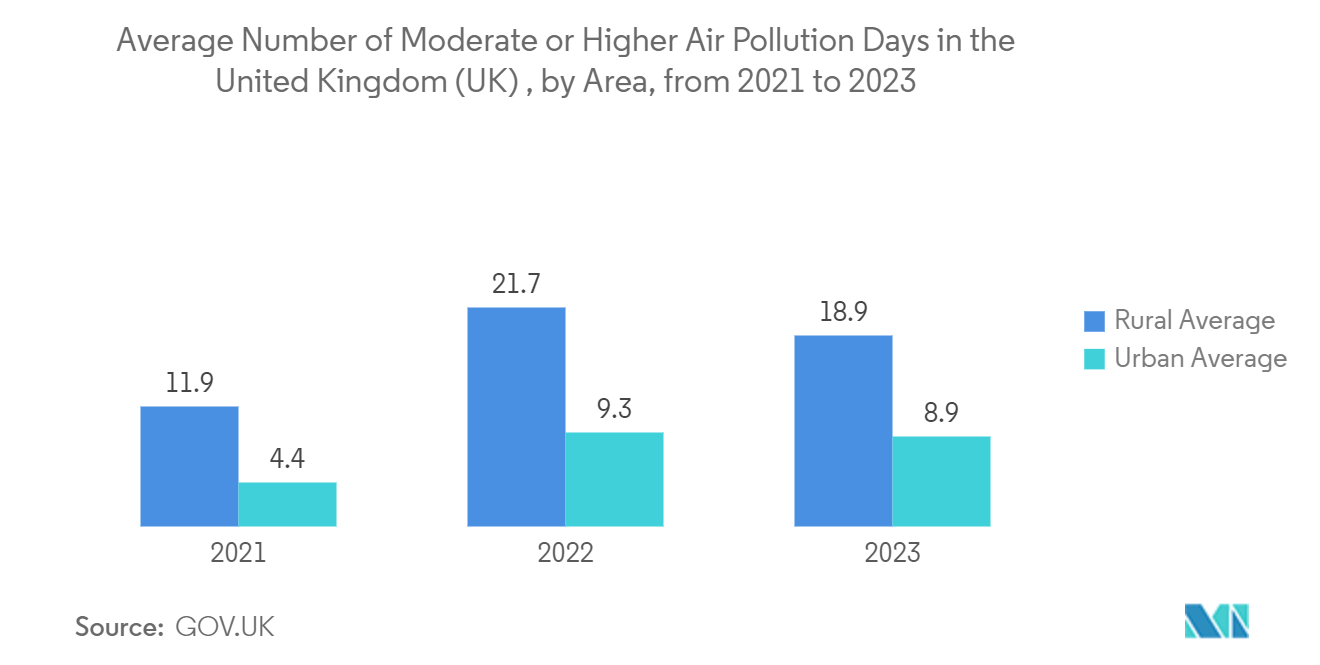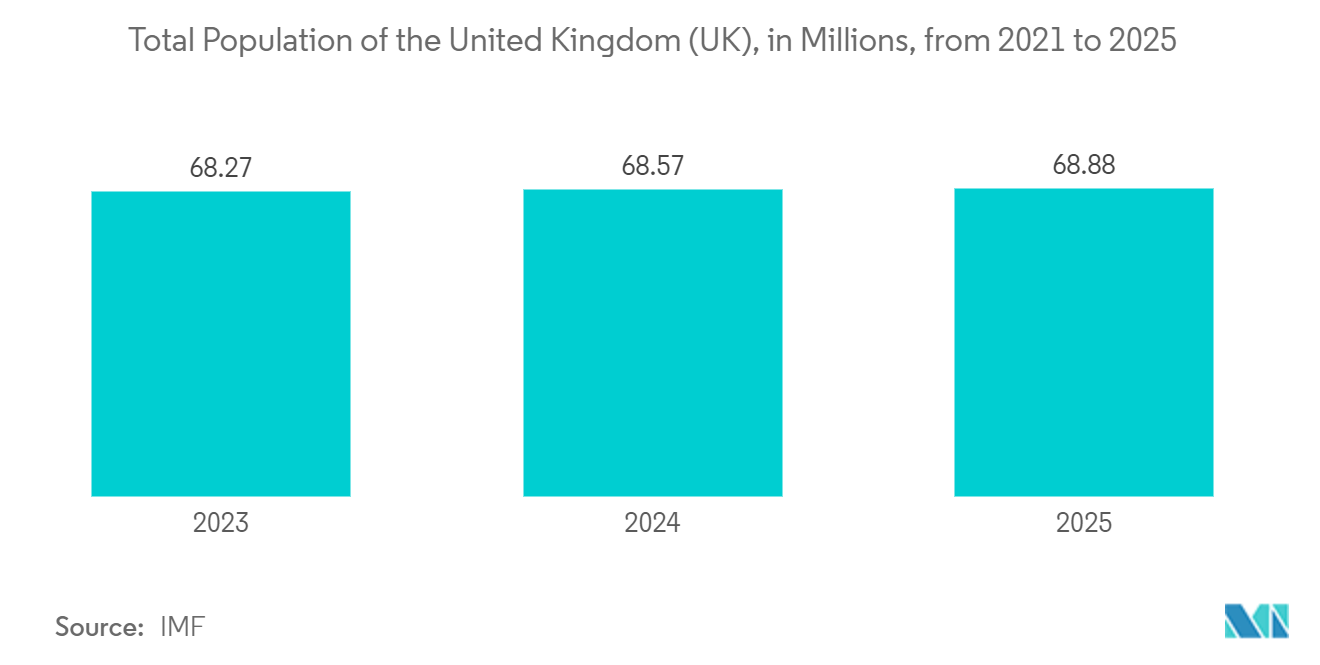Market Trends of UK Satellite-based Earth Observation Industry
Environmental and Climate Change Concerns to Drive the Market Growth
- Environmental and climate change concerns necessitate a robust and comprehensive monitoring system. Satellite-based Earth observation provides a unique vantage point for monitoring various environmental parameters such as land cover, deforestation, urbanization, coastal erosion, and pollution. As the need for accurate and up-to-date environmental data increases, the demand for satellite-based Earth observation services grows, driving market growth.
- The United Kingdom is also committed to addressing climate change through adaptation and mitigation strategies. Satellite-based Earth observation data helps assess climate-related risks, monitor greenhouse gas emissions, track changes in vegetation patterns, and evaluate the effectiveness of mitigation efforts. The market for satellite-based Earth observation expands as policymakers, businesses, and research institutions rely on this data to develop and implement climate change strategies.
- Moreover, environmental concerns in the United Kingdom include preserving natural habitats, conserving biodiversity, and protecting endangered species. Satellite-based Earth observation enables monitoring protected areas, identifying biodiversity hotspots, and tracking habitat changes. The market responds to the demand for data and analytics that support effective conservation and biodiversity management initiatives.
- The increase in government expenditure on environmental protection reflects its priorities in addressing environmental challenges. Higher expenditure indicates a greater emphasis on environmental conservation, sustainability, and climate change mitigation. Satellite-based Earth observation, an environmental monitoring and management tool, aligns with these priorities and may receive some allocated funds.
- Moreover, Government expenditure on environmental protection may include research and development initiatives funding. This funding can support advancements in satellite technology, data analysis techniques, and applications related to Earth observation. Investments in research and development can significantly contribute to the growth and innovation of the satellite-based Earth observation market.

Urban Development and Cultural Heritage Segment to Hold a Significant Market Share
- Satellite-based Earth observation plays a crucial role in urban planning and infrastructure development. High-resolution satellite imagery provides detailed information on land use patterns, population distribution, urban growth, and infrastructure networks. This data helps urban planners make informed decisions regarding land allocation, transportation planning, and the development of sustainable and resilient urban areas.
- In addition, The United Kingdom has a rich cultural heritage, including historical buildings, archaeological sites, and cultural landscapes. Satellite-based Earth observation is used to document, preserve, and monitor cultural heritage sites. High-resolution imagery and 3D modeling help in mapping and conservation planning, detecting potential threats, and ensuring the long-term preservation of cultural heritage assets.
- Moreover, satellite-based earth observation supports disaster risk management in urban areas. By monitoring changes in land cover, vegetation, and other indicators, satellites help identify vulnerable regions, assess risks, and support early warning systems for natural disasters. This information is vital for effective emergency response planning, reducing the impact of disasters on urban areas and cultural heritage sites.
- Satellite-based Earth observation plays a crucial role in monitoring and managing wildfires, including their impact on urban areas, infrastructure, and cultural heritage sites. By analyzing satellite imagery and other data sources, the authorities can assess the extent of wildfires, monitor their spread, and plan appropriate response strategies.
- Furthermore, satellite-based Earth observation is a crucial component of smart city initiatives. It helps implement smart technologies for efficient resource management, traffic management, energy optimization, and improving the quality of life in urban areas.


